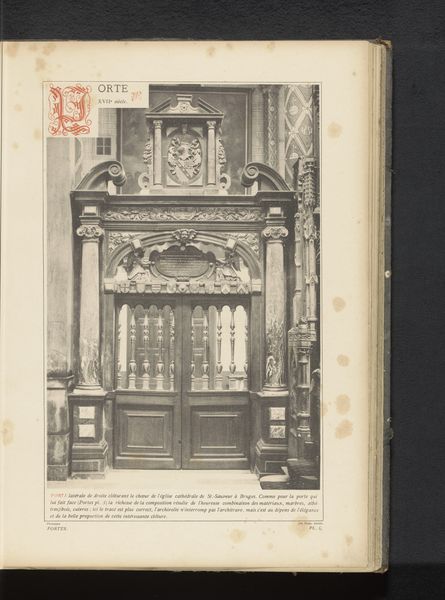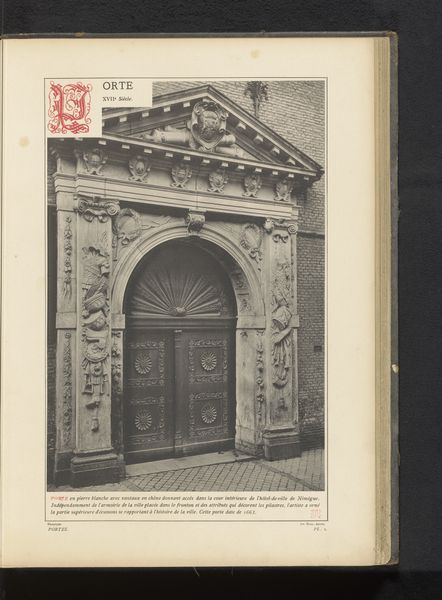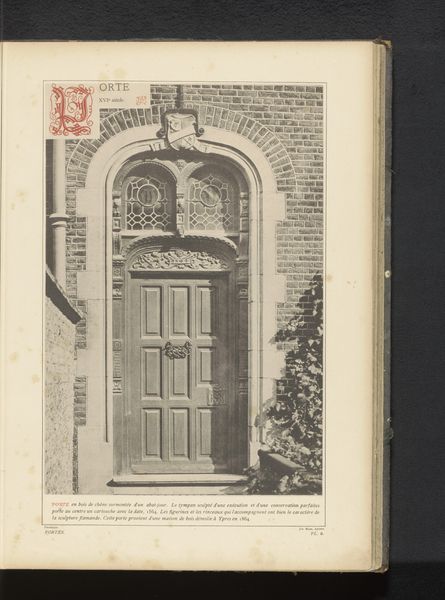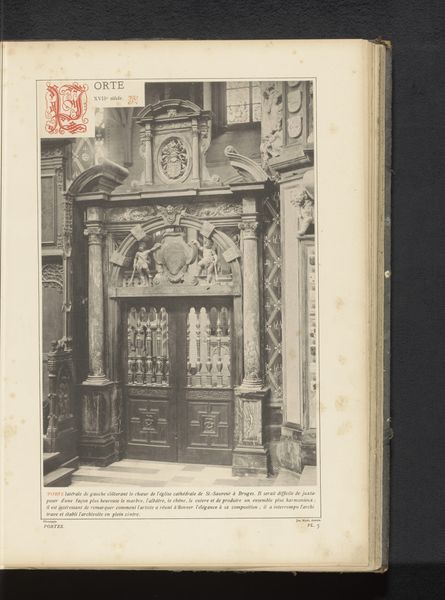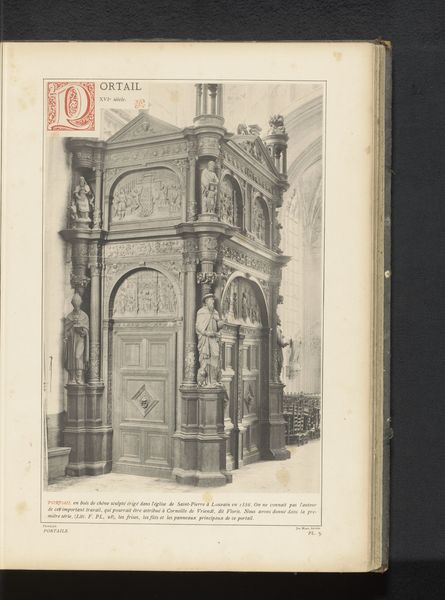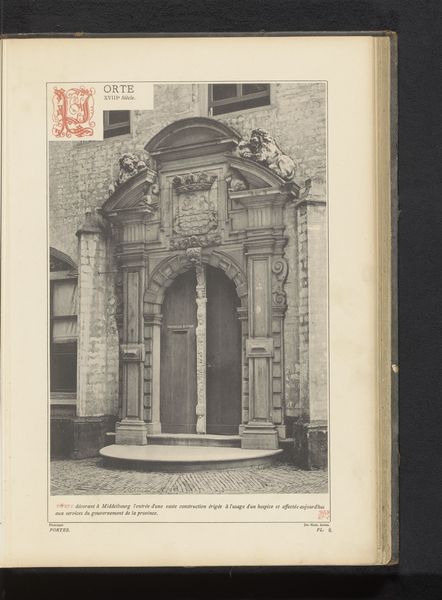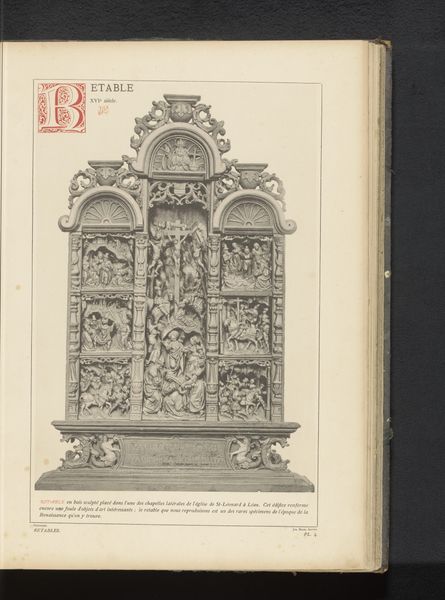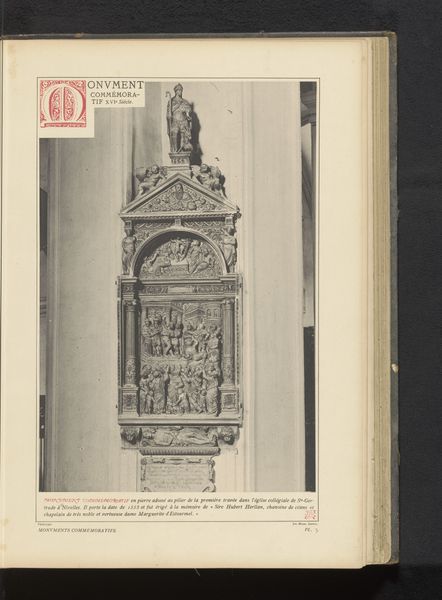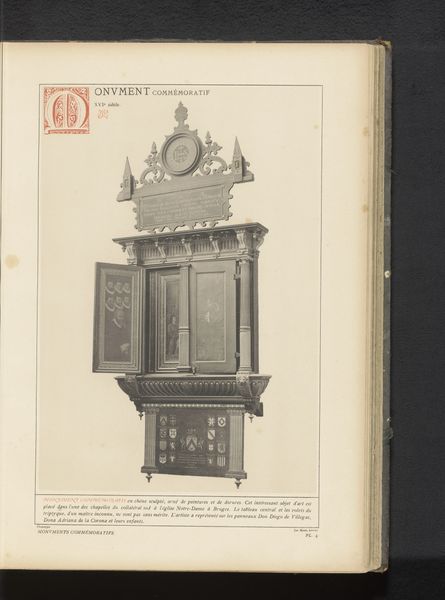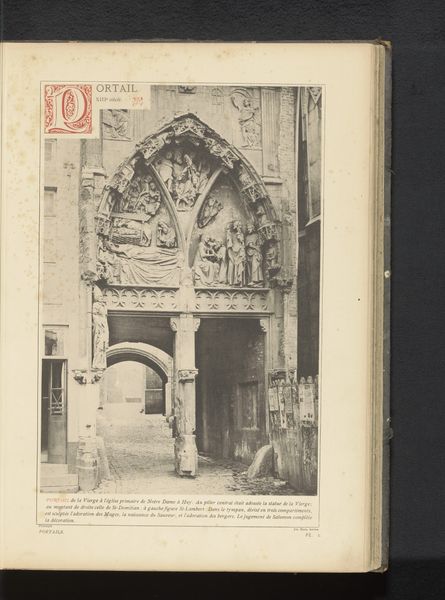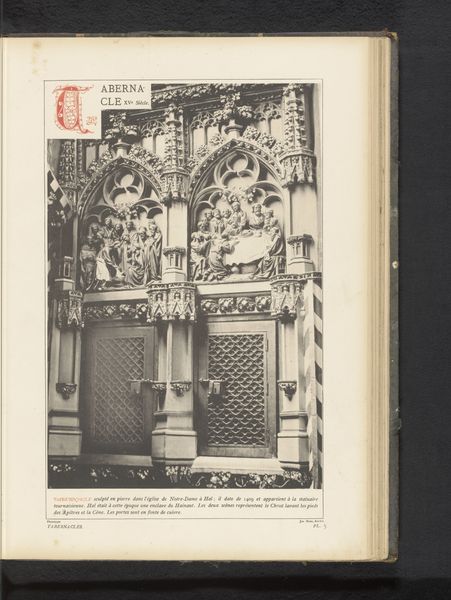
Eikenhouten deur van een hotel aan de Keizerstraat in Antwerpen, België before 1887
0:00
0:00
#
aged paper
#
homemade paper
#
paper non-digital material
#
paperlike
#
sketch book
#
paper texture
#
personal sketchbook
#
folded paper
#
letter paper
#
paper medium
Dimensions: height 339 mm, width 229 mm
Copyright: Rijks Museum: Open Domain
Editor: This page features a photograph of an oak door from a hotel on Keizerstraat in Antwerp, Belgium, dating back to before 1887. The image is strikingly formal and imposing, but its placement in what looks like a bound book softens the effect somewhat. How should we interpret this presentation? Curator: I see here the deliberate construction of civic identity. The reproduction of architectural details like this door, disseminated through printed material, participates in a larger project of defining and valorizing a particular vision of urban life. This isn't simply about documenting a door; it's about using this door, and others like it, to signify Antwerp's cultural status and historical significance. How do you think this image functions within the broader context of urban development at the time? Editor: So, it's less about the door itself and more about what the image of the door *represents* culturally? It feels a little staged or idealized, doesn't it? Curator: Exactly! Consider the intended audience: Who was meant to consume this image? Most likely, affluent individuals interested in culture and travel. The hotel is implicitly presented as a site of distinction, reinforcing existing social hierarchies through this aesthetic appreciation. Did this change your initial interpretation? Editor: It definitely adds a layer of socio-political awareness to what initially just looked like a fancy door. I guess I’d assumed this book was a straightforward architectural record, but it's really more about curating a specific *impression* of the city. Curator: Precisely. It’s crucial to consider the forces at play behind even seemingly simple images. I'm happy to know you leave with that important understanding.
Comments
No comments
Be the first to comment and join the conversation on the ultimate creative platform.
